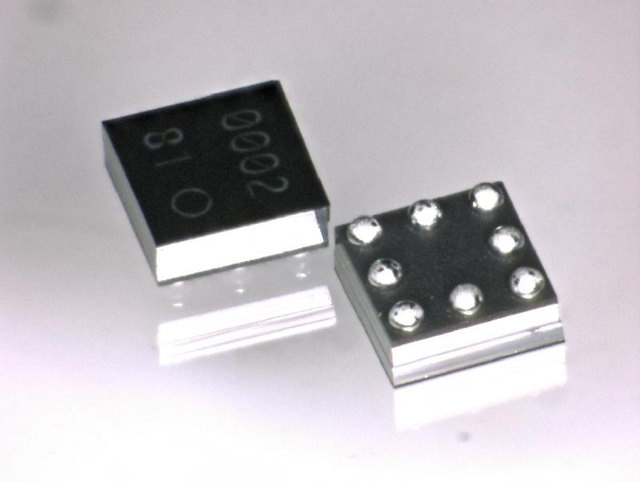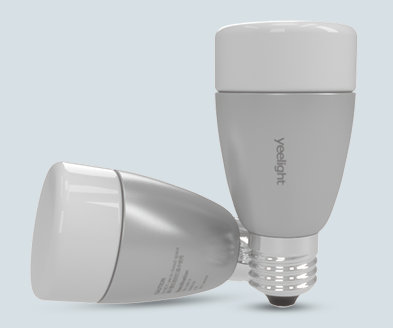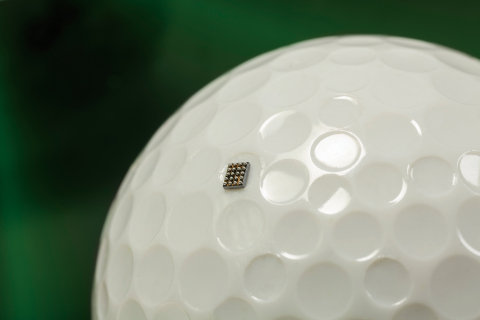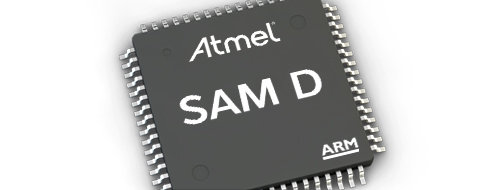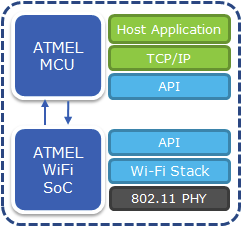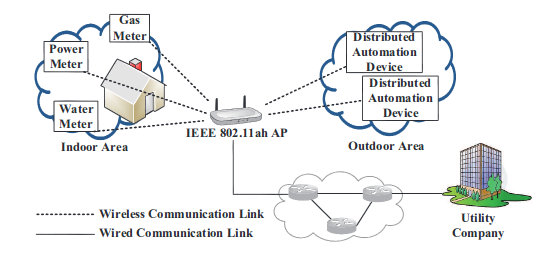Broadlink SP1, a low cost Wi-Fi smart socket released last year, allows you to control your electric appliance with your mobile device running iOS or Android. You could turn it on or off, set timers, and so on. An updated model is now available, Broadlink SP2, that adds energy monitoring to the features found in the previous model, to track your historic and live power consumption on your smartphone or tablet, as well as a motion sensor to automatically turn off the lights, for instance, if you are away (Auto Home / Auto Away feature). The hardware specifications are very similar to SP1 except it’s using a case made of polycarbonate plastic instead of ABS, and the device is a bit bigger: Material – PC Wi-Fi – 802.11 b/g/n Power Plug – Three flat-pin plug (Australia type) Voltage – 100~265V @ 50-60 Hz Output Current – 10A Output Power – […]
Alps Electric Magnetic Field Sensor Measures 1.15 x 1.15 mm, Software Algo Adds Gyroscope Function
I’m really impressed with the recent miniaturization of boards and components. Back in the days (in 2012), many people were amazed at the credit card size of the Raspberry Pi ARM Linux computer. Since then, we’ve seen many other ARM Linux board with similar or even smaller sizes, and on a broader scope, many smaller and smaller hardware and components: Olimex launched OLIMEXINO-85S Arduino compatible board about the size of a micro SD Card, eConais unveiled WiSmart EC19D Wi-Fi module measuring 8×8 mm, Freescale recently announced Kinetis KL03 Cortex M0+ MCU measuring 1.6 x 2.0 mm in its smallest package, etc… Today, I’ve come across another tiny chip, the world smallest magnetic field sensor by Alps Electric that measures only 1.15 x 1.15 x 0.56 mm. Height does matter too. It’s about 60% smaller than previous product by the company, but only slightly smaller than Asahi Kasei Microdevices’ AK09911C which measures 1.2 x […]
Yeelight Blue and Yeelight Sunflower Bluetooth Low Energy and Zigbee Smart Light Bulbs for iOS and Android
When it comes Smart light bulbs, which can be dimmed and made to change color, the most popular product must be Philips Hue, using the Zigbee protocol, which you can control via iOS and Android devices though a Zigbee gateway, and costs about $60 on Amazon. Alternative have started to show up such as iLumi Bulbs, with Bluetooth 4.0 Low Energy (BLE) technology, that you can control with recent iOS and Android 4.3+ device without the need for a gateway, but with a price starting at $89. If you’re looking for cheaper alternatives, you’d have to turn to Chinese companies such as Yeelight which provides both Bluetooth LE and Zigbee light bulbs, respectively called Yeelight Blue and Yeelight Sunflower. Yeelight Blue does not require a gateway, but you’ll need a smartphone or tablet that supports Bluetooth 4.0 Low Energy. Recent iOS 5.0+ devices should support it. If your Android device […]
DIY Farm & Garden Automation with Arduino and APDuino Project
You would like to start to grow your own vegetables but you don’t really have enough place and/or time to take care of your garden. No problem! Just go vertical and automate your garden with an Arduino Mega, an Ethernet shield, and lots sensors and valves. That’s basically what Rik Kretzinger, who grew up on a Christmas tree farm, and has a major in horticulture, has done at his home. This whole system use a farming technique called aquaponics, mixing aquaculture (raising fish in tanks) and hydroponics (cultivating plants in water), and except planting and harvest, is mostly automatized. The hard part is to set it up. The firmware is based on APduino “Internet-of-growing” open source project that runs on Arduino Mega to gather data from sensors (humidity, temperature, pH, light…) and control the valve. Rik’s system also upload data automatically to Xively cloud so that he can monitor his […]
Meet Freescale Kinetis KL03, the Smallest Ever ARM MCU
Last year at Embedded World 2013, Freescale announced Kinetis KL02, an ARM Cortex M0+ MCU measuring just 1.9 x 2.0mm. Customer must have complained that it’s not small enough, as the company has just unveiled Kinetis KL03 MCU, 15% smaller or 1.6 x 2.0 mm, at Embedded World 2014. Just like its predecessor KL03 targets space-constraint IoT applications such as ingestible healthcare sensing, portable consumer devices, remote sensing nodes, and wearable devices. Kinetis KL03 MCU features include: 48 MHz ARM Cortex-M0+ core, 1.71-3.6V operation Bit manipulation engine for faster, more code-efficient handling of peripheral registers 8 to 32 KB flash memory, 2 KB RAM, 8K ROM with on-chip boot loader High-speed 12-bit ADC Internal voltage reference for high ADC accuracy High-speed analog comparator Up to 22 GPIOs with pin interrupt support Low-power UART, SPI, I2C (high speed) Low power wake up Secure real time clock Timers for a broad range of […]
Atmel Adds SAM D21, D10 and D11 MCUs to Its ARM Cortex M0+ SAM D Family
Atmel launched SAM D20 MCU family based on ARM Cortex M0+ last year, and at Embedded World 2014, the company has launched three new MCU families featuring ARM ultra low power core with SAM D10, SAM D11, and SAM D21 families and their corresponding Xplained PRO development boards. Atmel four SAM D families target different applications and price points: SAM D10 – The smallest member of the SAM D family in terms of memory, pin count, and features. SAM D11 – Adds full-speed USB not available on the SAM D10. SAM D20 – “Offers a rich set of peripherals, flexibility, and ease-of-use with low power consumption.” SAM D21 – Adds features such as full-speed USB, DMA, high-end timers/counters to D20 design. I’ve compared the four families in the table below: SAM D10 SAM D11 SAM D20 SAM D21 # MCU in Family 4 4 15 12 MCU Core ARM Cortex-M0+ […]
Atmel Introduces ARM Cortex M0+ based SmartConnect Wi-Fi Modules and SmartConnect Zigbee SoCs
In order for the Internet of Things to take off, wireless connectivity solutions with ultra low power, lost cost, and small footprint are needed. Atmel seems to have made a step in the right direction by launching SmartConnect Wi-Fi modules and Zigbee SoCs featuring an ARM Cortex M0+ core. SmartConnect Wi-Fi does not appear to be a single chip solution, but instead Atmel has created a family of Wi-Fi modules integrating the company’s ultra-low power Wi-Fi SoChip with an ARM Cortex M0+ based MCU. These modules will enabled battery-powered Wi-Fi connectivity for IoT endpoints such as thermostats, and temperature sensors in a cost effective way. The company will provide a software solution with application and security protocols such as TLS, TCP/IP stack and an RTOS, all of which can be downloaded via Atmel Studio 6 Integrated Development Platform (IDP). SmartConnect ZigBee SAM R21 combines an ARM Cortex M0+ core with […]
802.11ah Wi-Fi (900 MHz) to Provide Low Power, Long Range Connectivity for the Internet of Things
Most devices now feature Wi-Fi modules capable of handling 802.11 b/g/n at 2.4 Ghz (and 5 GHz for dual band Wi-Fi), and newer devices and routers boast 802.11ac connectivity @ 5GHz with increased bandwidth (up to 1.2 Gbit/s in theory, maybe around 400 Mbit/s in practive), and in some case increased range with beam-forming. But thanks to an article on EETimes, I’ve learned there’s another upcoming Wi-Fi standard called 802.11ah operating in the 900MHz range, with data rates from 150 Kbit/s with a 1 MHz band to as much as 40 Mbit/s over an 8 MHz band, lower power consumption, and a least double of the range of a typical 802.11n device,capable of covering an area of about 1 km2. The target applications are sensors networks, backhaul networks for sensor and meter, and extended range Wi-Fi, as the standard allows long range and more clients at low bitrates. This new […]



